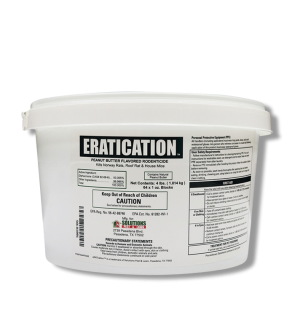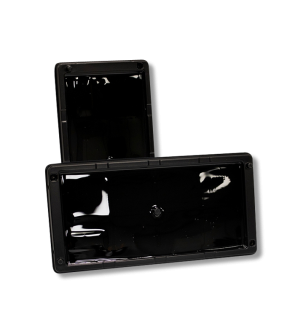Pest Control Advice When Purchasing A New Home
Most Effective Products
Pest Control Advice When Purchasing A New Home
This page is a general article for new homeowners and potential pest control signs or infestations to be aware of prior to purchasing a new home. Here you can find professional level advice and products to guarantee the best scenarios or management within your new home.
When examining your potential new home or property for home construction you begin with a visual scan. However, as a first time homebuyer this may prove to be a daunting task as there are underlying pests and activities that are not as easily recognized to an untrained eye.
Many homeowners often believe that new homes are not susceptible to pest infestations, but the reality is that they can have a large infestation in and around the property. When examining homes that have been on the market or for those that are undergoing construction you will want to consider the length of time each home has faced such as the pre-construction, just completed construction, and homes that are less than 3 years old. These periods are the most common to see pest invasions, but homes not falling under these categories should not be ruled out for potential pest infestations.
Otherwise, pesky pests such as termites, rats or mice, German Cockroach, and silverfish will go unnoticed and wreak havoc on the exterior and interior of your new home.The difficulty associated with these common new home pests is some of their activities can be hidden away behind walls, below the floor, or underneath current appliances. For rats, mice, and termites you may see more cosmetic damage such as feces dropping, oily marks along the walls from rodents bodies, and holes or chew markings on wood surfaces.
By following the listed DIY guides and tips to pest control advice during a home tour or construction you can avoid cost, time, and an unwanted roommate during your move-in. If you have any questions with the following methods and tips suggested, then please reach out to one our trained professionals through phone or email.
How to Perform Pest Inspections During Home Tours
Before rushing into a lifelong commitment, ask to tour a home in person to observe any potential signs of the pest mentioned earlier in this article. By identifying these pests and sings of their activity can help avoid any surprise repairs due to pest damage. Besides avoiding financial cost, you also help to ensure the safety of yourself and your personal belongings from destruction.
1. Traces of Feces

Pests such as the German Cockroach, rat, and mice are active all year, but are generally more active at night than in the day. During your tour look for mice feces that are smaller than 1/4 inches, anything larger than this would be rats. Like most cockroaches, German Cockroaches will leave waste that is similar to black pepper.
These pests will leave feces all over a home whether it be out in the open or within dark, hidden corners. If possible, try to privately look within the homes bathrooms, kitchens, attic, basement, and bathrooms. This also includes areas where there are cupboards, storage areas such as closets or kitchen pantries, and underneath sink areas.
2. Wood and Structural Damage

Bugs such as subterranean termites and silverfish are commonly found near damp conditions that are not easily disturbed by human activity. The only exception is that drywood termites do not depend on moisture or soil like subterranean termites and instead will infest wood within or surrounding a new homes structure. Some of the signs for termites are mud tubes and frass which will be a sawdust-like material from the termites digging and feeding activity on the homes wood structure.
While silverfish will not consume the wood from your homes structure they can ingest starchy paper materials such as paper, wallpaper and glue. The easiest tell-tale sign of a potential silverfish infestation in a new home is to witness wallpaper peeling from the walls in strips, faded or thin carpet, or to find small chew holes in fabric materials such as existing curtains.
The only non-insect pest in this section to mention are rats and mice. Signs of rats and mice are usually easy to detect from chewing on walls, wood surfaces, rafters in the ceiling, electrical wiring, hall corners and finding shredded piles of cloth or insulation in corners or underneath appliances for their nest.
If you find that you cannot escape the company of your salesperson, try to visual observe all the previously mentioned signs or take notice if the homes wooden floorboards appear bubbled. Besides potential foundation issues, this can suggest that that pest activity such as urine or feces has soaked into the wood to create this cosmetic damage.
3. Stains and Dead Pests

For a thorough inspection, bring along a flashlight and examine underneath and behind appliances, dark corners, narrow pathways that cannot easily be reached, and along the walls of the home to observe stains and oil marks from rats, mice, and cockroaches travel activity.
Rats and mice will travel through plumbing or throughout dirty and dusty areas making their fur greasy and covered in dirt and other debris. These rodents are consistent creatures that will stick to a route of travel they deemed to be safe, which often leaves oil rub marks on the walls.
The same thing can be said for cockroaches such as the German Cockroach or American Cockroach. The only difference between German Cockroaches and rodents is that sometimes these insects can travel into a home through a previous owners belongings during moving.
Typically, the American Cockroach is an outdoor pest that infests areas with an abundance of overgrowth and trees. They are not a standard indoor pests, but can come within homes that do not have consistent human activity or in search of moisture.
Most home that have been on the market for a while will consist of dead pests such as insects and sometimes rodents. Commonly deceased insects can be found within your homes walls, against the walls, around the window and door frames, and within cabinets or drawers. Deceased rodents such as mice and rats are not as obvious to spot since they are more cautious in nature. The easiest method to tell if there are decomposing rodents is observe if there is a pungent odor.
Chances are if you are observing an strong pungent rodent odor or a large quantity of dead insects such as cockroaches, termites, or silverfish then chances are there may be a current infestation.
How to Remove Pests within Your New Home
Before beginning any type of treatment for your new home you will need to wear the appropriate personal protective equipment (PPE) that will protect your hands, mouth, eyes, face, skin, and feet.
If are you willing to Supreme a home that has a current infestation of these listed pests then the following products can help to ensure complete elimination.
Step 1: Remove Yard Debris

The first step to do as a homeowner is to remove any debris such as shredded paper or insulation, excessive tree branches on yard, leaf piles, thatch, and rain gutters.
If you need to clean those hard to reach rain gutters you can use a leaf blower to easily blow the debris away. For yard cleanup, you can either use a rake or dethatching rake to remove compacted turf and other organic yard debris.
Collecting these sources will help to eliminate the environments for any current or future outdoor pests and limit food sources for pests to feed upon.
Step 2: Spray Property with Supreme IT

For outdoor yard treatments, we recommend using a broad spectrum insecticide such as Supreme IT. This liquid formulation product creates an insecticidal barrier for up to 90 days against a variety of insect pests.
To determine how much Supreme IT to use within your property you will need to calculate the square footage in the yard. To do this, you will need to measure the yards length and width in feet and then multiply them together (length X width = square footage). A standard application of Supreme IT is 1 fl. oz. of product per gallon of water per 1,000 sq. ft.
To apply this product, you will need to use either a pump sprayer, backpack sprayer, or hose-end sprayer. In your selected sprayer, fill halfway with the appropriate amount of water, then add the measured amount of Supreme IT, and then fill the rest of the way with the remaining half of water. Secure the lid and agitate the sprayer until solution is evenly mixed.
Once you have the appropriate amount of product mixed together you will spray 3 feet up and 3 feet out from the homes foundation. This includes window frames, door frames, underneath porch ceilings, and electrical/plumbing penetrations. Within your yard spray the underside and topside of turfs leaves and foliage.
Step 3: Layout Rodenticide Bait Outdoors

Now that your home and property has been cleaned you are ready to bait the exterior with rodenticide products. Rodenticide products such as Eratication Rodent Bait Blocks are formulated with the active ingredient diphacinone which works to cause internal bleeding within rats and mice.
To prevent bait shyness, it is also contains peanut butter, seeds, and ridges to encourage rodents to gnaw on the product. As with any rodenticide products, they have to be placed within tamper-proof bait stations to prevent wildlife, pets, and children from coming into contact with the product. Eratication is designed with pre-drilled holes to insert more easily into the bait stations to help keep the product in place and prevent unintentional exposure.
Generally placements are made 15 to 20 feet apart as rodents will travel far in search of food. For best results, place the bait station laid with Eratication Rodent Bait Blocks alongside your home or structures foundation and other areas where rodents are frequently inhibiting outdoors.
Depending on the severity of the rat or mice infestation, you will want to check the trap at least once a day with gloves to avoid skin contact or scent impression. You will want to continually replenish the product until 15 days have passed.
Step 4: Place Glue Traps Indoors

Improving sanitary conditions and removing food sources is not enough to remove rat and mice infestations who are already accustomed to your home prior to your arrival.
Effective glue traps such as the Solutions Professional Rat/Mouse Glue Tray are ideal for any persistent indoor rat or mice. This board comes infused with an peanut butter aroma to attract rodents to the board. Alone this product can handle any large rodent or rice, but to increase your chances you may carefully place a glob of peanut butter into the middle of the trap.
Monitor the trap from a distance and be careful to remove the trap from the site when a rodent becomes entrapped. The Solutions Professional Glue Boards should be placed along the walls that the rodent frequently travels or underneath appliances.
Key Takeaways
What Pests Should You Look for During Home Tours?
- Pests such as termites, rats, mice, silverfish, cockroaches can be found within new homes or properties.
What to Look For During Home Tours or within New Homes?
- Rodents such as rats and mice will leave oily, rub marks along walls and appliances. Feces residue from cockroaches and rodents are more easily identifiable within cupboards, hallways, kitchen and bathroom areas. Silverfish and termites will leave more physical damage such as holes within wood, walls, and wallpaper.
How to Remove Pests from New Homes
- The first thing to do is to remove any excess of yard debris such as overgrown foliage, thatch, loose insulation, paper, and leaves. Once this has been removed, you can proceed with an insecticide application such as Supreme IT. Next, treat your yard with tamper-proof bait stations laid with Eratication Bait Blocks. Indoors, lay out several Solutions Professional Rat/Mice Glue Boards.













































































































































































































































































































































































































































































































































